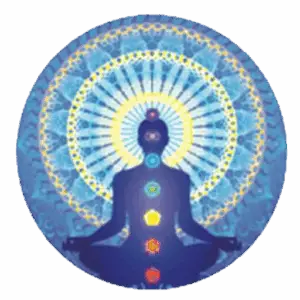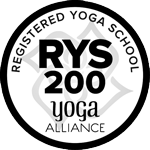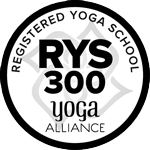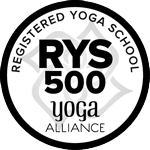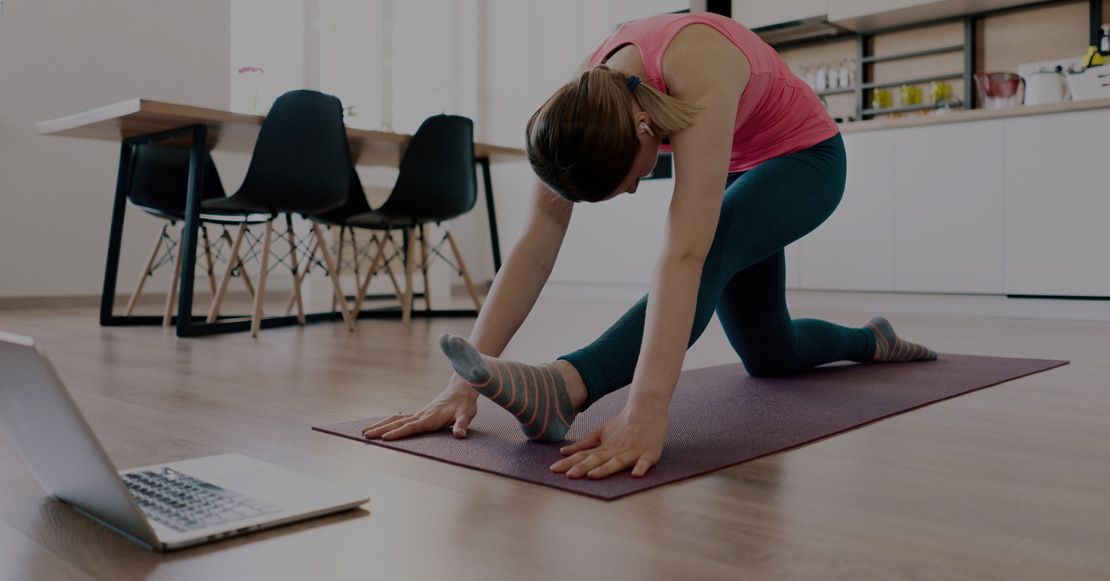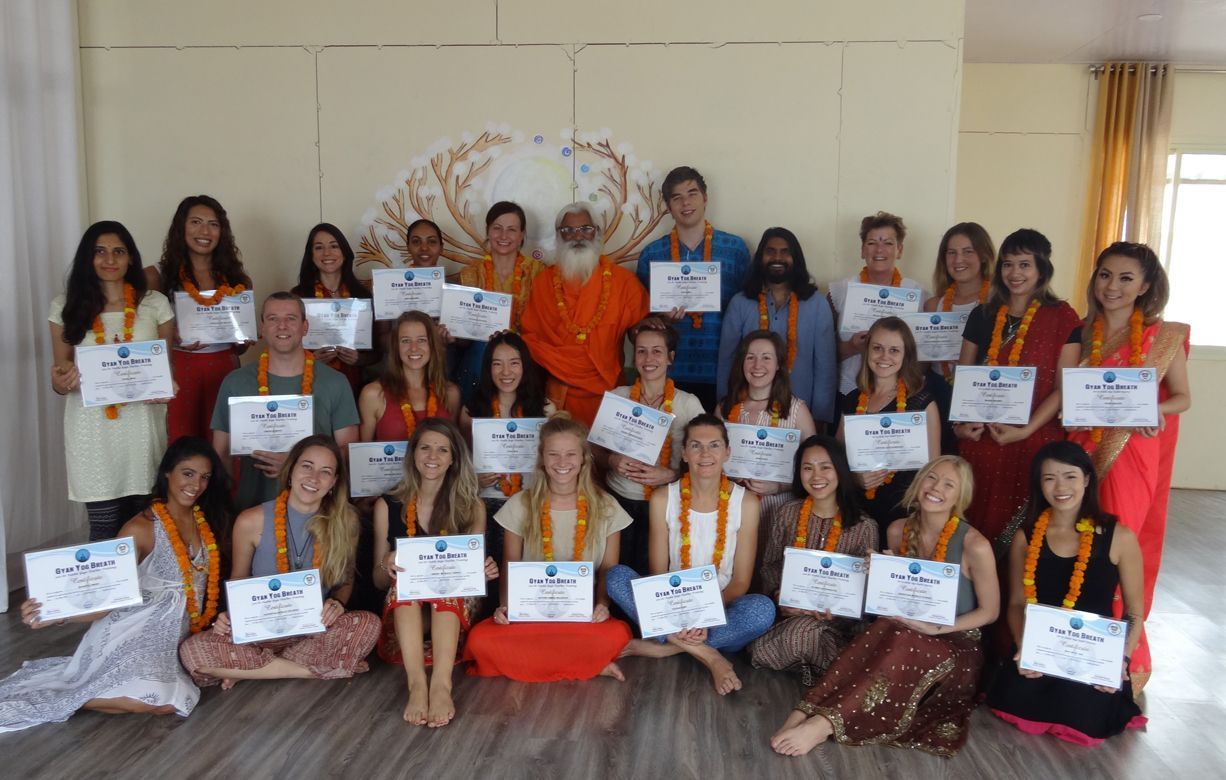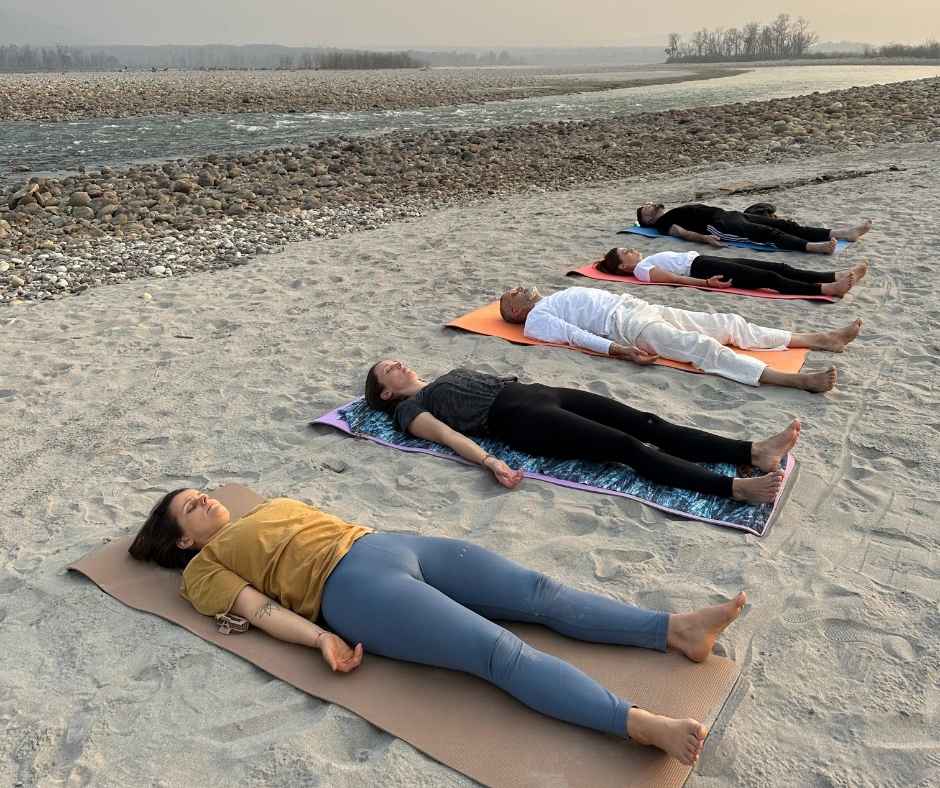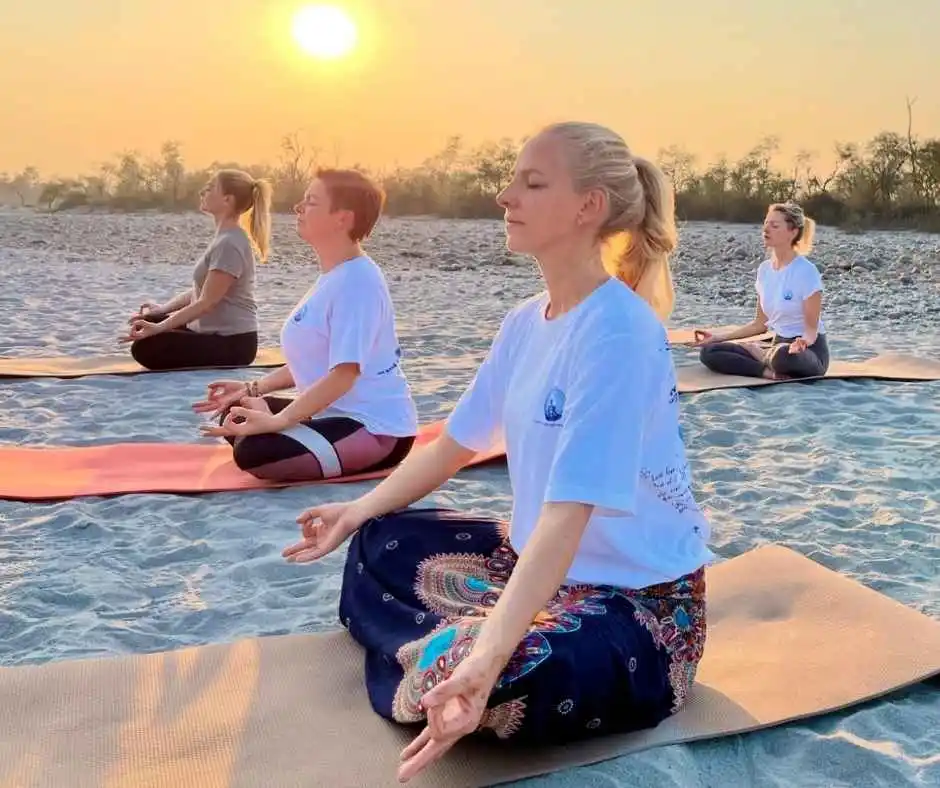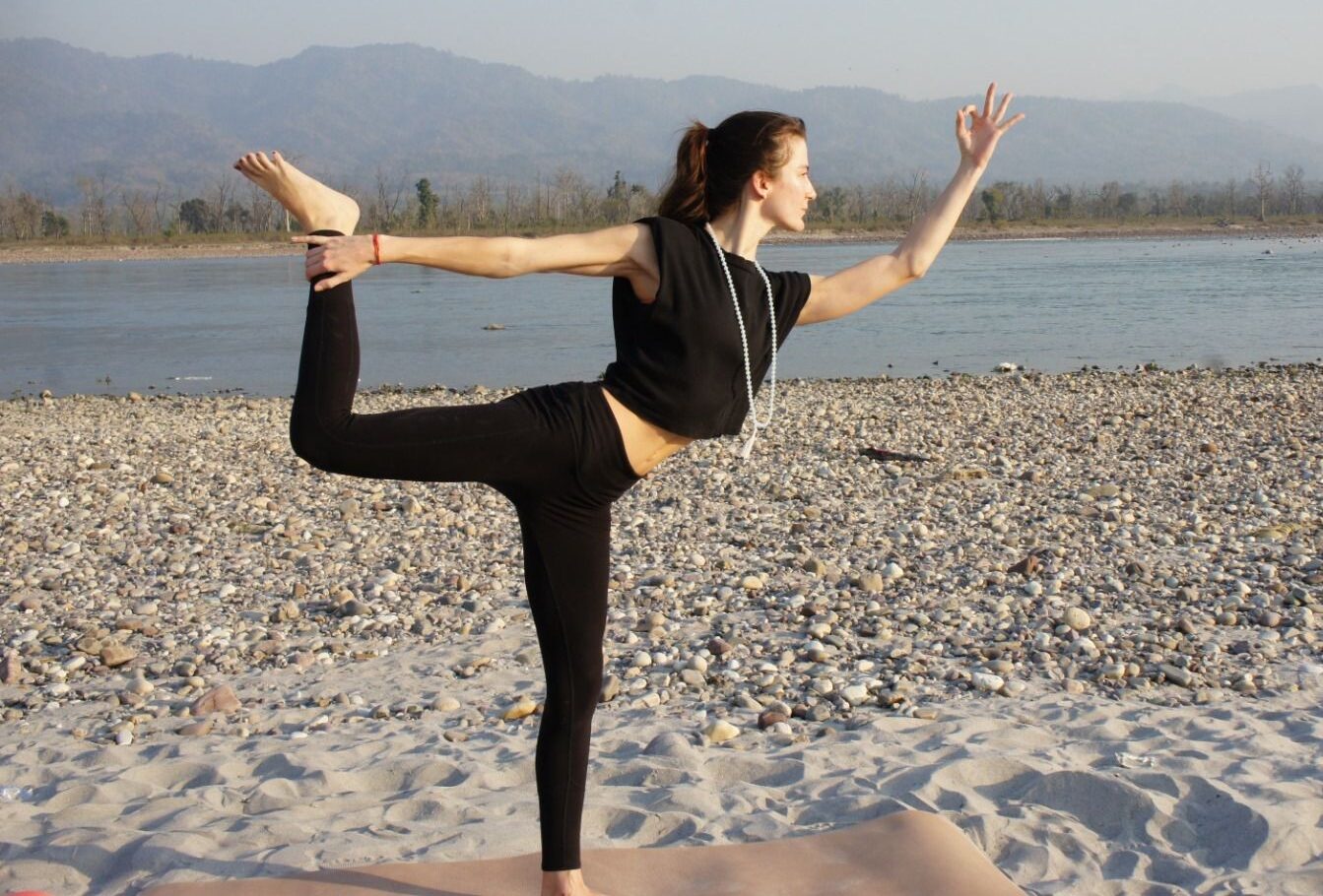Improving Mental Concentration With Yoga
In the modern society we living in nowadays, our pace of living became faster and with
limited time in a day, we became living in a multitasking way. For example, we are typing our
emails while talking on the phone; or we are preparing dinner while watching television. With
this way of living, I would comment it as decreasing our productivity as well as ruining our
concentration ability which we were born to be single-tasking. It also would make our minds
not clear with many thoughts spinning around. I do believe it is significantly important for us
to gain back our mental concentration, so that we can have a more stress-free, peaceful,
happier life. As a yoga practitioner, I truly believe and experienced that yoga definitely can
help us to achieve a better mental health as well as improve concentration. The following will
discuss on yoga asanas, pranayama and meditation which can help improve mental
concentration, in addition, share on some daily living habits that we can do for better health,
both physically and mentally.
What is Yoga
There are many definitions on Yoga. The word itself is from Sanskrit word “yuj” meaning to
bind, union or communion. According to Yoga Sutra by Patanjali, “Yoga is the controlling of
modifications of our mind.” Some would say yoga is the practice of reunion of body, mind
and soul. They are all right towards yoga.
To me, yoga is an attitude towards life; a practice on and off yoga mat; and a journey that
leads you to peace. Always be good, do good, carry out unconditional love and live a humble
and harmonious life.
I have started my yoga journey 7 years ago. I would never have imagined how yoga
changed me. Starting with yoga asana classes, I gained physical strength and flexibility
which helped correct my poor standing, sitting, and even sleeping postures. Asana practices
made my body system functioning in a better way, my face can have natural blushes which
indicate the blood circulation became better. I thought that was what yoga can only do on
me. Nevertheless, as time passed, I realized it gradually changed my mind and attitude
towards life. I found myself calm, easily get focused, think or see things in a more positive
way and being more understanding. Yoga also changed my diet gradually, turning me from a
meat-lover to vegetarian. Now, I am glad I have the opportunity to share yoga that more
people can enjoy and get the full benefit from yoga.
Asanas and Benefits
One of the beauty of yoga asana is you can obtain the benefits of that posture physically as
well as mentally. Basically, when you start practicing asanas, by bringing awareness to
your body parts , way of breathing and dristi (where you look at), they all help you to focus on
calming yourself and increasing your mental concentration. The following suggests some
asanas that can focus more in improving mental concentration with techniques, suggested
duration and benefits descriptions. Variations would also be suggested for different levels of
practitioner.
Vrksasana
[Standing, balancing, hip opening, muscle strengthening]
Vrksa means tree in Sanskrit. This asana is known as the Tree pose.
When practicing this pose, imagine yourself as a tree. Your foot is going to extend the root to
the ground for a firm base to grow, your spine is lengthening to grow taller branches
reaching for more sunlight.
Technique
1. Stand upright in Tadasana with feet together.
2. Shift body weight to left leg and slowly lift right leg up with a bended knee.
3. Grab the right ankle and place Maintain the left leg straight with thigh muscles
engaged.
4. Press the right leg towards the left inner thigh helps to gain stability.
5. Keep opening the right pelvis by pointing the right knee outward.
6. When balanced, join palms together and raise arms up.
7. Keep shoulders pressing down, away from ears.
8. Eyes shall focus on a point preferably non-movable and further away.
9. Maintain slow, deep, and even inhalations and exhalations.
10. Release hands and then foot with control.
11. Relax, shake legs and change sides.
Suggested duration
Stay for the same length on both sides. Practice 2-3 rounds on each leg
Benefits
● Strengthens leg and core muscles
● Helps in hip opening
● Improves muscles coordination
● Gains sense of balance
● Improves concentration
Garudasana
[Standing, balancing, hip closing, muscle strengthening]
Garuda means eagle in Sanskrit. This asana is known as Eagle pose.
Technique
1. Stand upright in Tadasana with feet together.
2. Shift body weight to left leg and slowly bend left knee.
3. Lift the right leg and bring it over the left thigh.
4. Wrap the left calf with the right foot.
5. Bring the arms in front of the chest.
6. With right arm under, left arm on top, twist the forearms with bent elbows.
7. Join palms together making the eagle’s beak.
8. Maintain shoulders pressing down, away from ears.
9. Try to bring elbows at shoulder level.
10. Try to keep the forearm away from the body pointing forward.
11. Maintain a squared hip.
12. Eyes shall focus on a point preferably non-movable and further away.
13. Maintain slow, deep, and even inhalations and exhalations.
14. Release hands and then legs with control.
15. Relax, shake legs and change sides.
Suggested duration
Stay for the same length on both sides. Practice 2-3 rounds on each leg.
Benefits
● Strengthens leg and ankle muscles
● Helps in hip closing
● Removes stiffness in shoulders
● Prevents cramps on calf muscles
● Improves muscles coordination
● Gains sense of balance
● Improves concentration
Variations
1. For tight shoulders, instead of eagle arms, grab on opposite shoulders.
2. If unable to wrap calf with other foot, touch toes on the mat.
3. Bend forward, elbows touching knee cap.
Parivrtta Utkatasana
[Standing, balancing, twisting, muscle strengthening]
Parivrtta means twisted, Utkata means powerful. This pose is known as the twisted chair pose.
When performing this pose, imagine yourself sitting comfortably on a chair.
Technique
1. Stand upright in Tadasana with feet together.
2. Exhale, bend the knees and sit back until the thighs are parallel to the floor.
3. Maintain a neutral spine. Avoid arching the lower back. Tuck tailbone inwards.
4. Join palms in front of the heart center and place a right elbow on the outer left thigh.
5. Feel the spinal twist, exhale and try to push the palms towards your heart center.
6. Focus your gaze on the ceiling.
7. Maintain slow, deep, and even inhalations and exhalations.
8. Hold for 30 seconds.
9. Slowly return to Tadasana, relax and change sides.
Suggested duration
Stay for the same length on both sides. Practice 2-3 rounds on each side.
Benefits
● Strengthens leg and ankle muscles
● Removes stiffness in shoulders
● Prevents cramps on calf muscles
● Improves muscles coordination
● Extends the spine
● Massages abdominal organs
● Alleviates constipation, beneficial for the digestive system
● Gains sense of balance
● Improves concentration
Variations
1. Try to keep feet hip-width apart. Place a block next to the outer edge of the left foot, place right
palm on the block and spread left arm up. It would make the pose more accessible.
2. Place right palm next to the outer edge of left foot, twist and spread left arm up. It would
make a deeper twist.
Ustrasana
[Backbending]
Ustra means camel in Sanskrit. This asana is known as the Camel pose.
Technique
1. Stand on knees with knees, thighs, and feet together, with toes pointing back.
2. Place palms on hips, row shoulders towards back to keep chest opened.
3. Tuck tailbone in, push hips forward, stretch thighs and slowly curve the spine back.
4. Exhale and place right hand on right heel, and then left hand on left heel.
5. Press the feet with palms.
6. Bend the head back and gaze at the back.
7. Try to maintain the stretch on thighs and keep contracting buttocks to push hips
forward.
8. Focus on the one-point gaze and bring awareness to your slow, deep, and even
inhalations and exhalations.
9. Stay in the pose as long as it is comfortable.
10. Release the hands one by one and place them on the hips.
11. Rest in child pose.
Suggested duration
Hold in the pose for maximum 3 minutes or practice for 2-3 rounds with 30 seconds holding.
Benefits
● Stretches the entire spine, relieves backache
● Helps correcting droopy shoulder syndrome and hunched backs
● Improves posture
● Regulates thyroid gland with full front neck stretch
● Alleviates constipation, beneficial for the digestive system
● Improves concentration
● Keeping chest open allows breathing in more air, helps improving the clarity of mind
Variations
1. Keep knees pelvis width apart and tuck toes in would make the pose more
accessible.
2. Grab right heel with left hand into Ardha Ustrasana.
Paschimottanasana
[Seated, forward bending]
Paschima means west in Sanskrit, referring to the backside of the body. This asana is known
as Seated forward bend.
Technique
1. Sit in Dandasana with flexed feet together.
2. Maintain spine straight.
3. Raise arms up and grab big toes with index and middle fingers.
4. Inhale, keep elbow and spine straight.
5. Exhale, bend elbows, and fold forward.
6. Eyes gaze at big toes.
7. Focus on the gaze and bring awareness to your slow, deep, and even inhalations
and exhalations.
8. Try to place belly on thighs, chest on knees, and eventually forehead on shin bones.
9. Stay in the pose as long as it is comfortable for 1-5 minutes.
10. Inhale, raise your head up, come up slowly and relax.
Suggested duration
Hold in the pose for 1-5 minutes.
Benefits
● Stretches hamstrings
● Extends spine
● Massages heart, spinal column, and abdominal organs
● Improves concentration
● Improve the power of endurance
Variations
1. Bend knees would make the pose more accessible.
2. Hold wrist or placing blocks in front of feet would increase the stretch and power of
concentration.
Pranayama
We breathe 15-18 times per minute. However, you may be surprised that most people are
breathing incorrectly, and not fully utilizing their lung capacity. Learning how to breathe can
help to promote better brain performance and to calm our minds. It is also one of the simplest
accessible tools to improve concentration. Pranayama is all about controlling of breath. The
following will share some pranayama techniques to promote mental concentration.
Yogic breathing
Yogic breathing consists of abdominal, thoracic, and clavicular breathing. When conducting
the breathing, always inhales and exhale through nostrils.
Technique
1. Sit in any meditation posture or lie in Savasana. Relax your body. Make yourself
comfortable.
2. Close your eyes.
3. Inhale slow and deep to expand abdomen fully.
4. Expand the rib cage and inhale more to fill up the rib cage.
5. Inhale more until the air fills up the upper part of the lung. Shoulders and collar bone
might have shifted up slightly.
6. Inhalation is completed.
7. Relax the neck and upper chest to allow the chest to contract.
8. Exhale, try to empty lungs with no force.
9. Continue exhalation until the abdomen is emptied.
10. Exhalation is completed.
11. Maintain the inhalations and exhalations slow, deep, and even.
12. Perform 10-20 rounds and gradually increase to 10 minutes daily.
Benefits
● Increases the amount of air into the body
● Calms the mind
● Improves concentration
Nadi Shodhana Pranayama
It is known as psychic network purification. When conducting the breathing, always inhale
and exhale through nostrils. With this pranayama, we need to make a Nasagra mudra with
our right hand.
Nasagra Mudra
1. With right hand, place index and middle fingers on eyebrow center.
2. Thumb on the right nostril and ring finger on the left nostril.
Technique
1. Preparation
a. Sit in any meditation posture. Relax your body. Make yourself comfortable.
b. Close your eyes.
c. Make nasagra mudra on the right hand and close the right nostril.
d. Inhale and exhale slowly, deeply, and evenly through the left nostril for 5 breaths.
e. Close left nostril, release the right nostril and Inhale and exhale slowly, deeply
and evenly through the right nostril for 5 breathes.
f. Release right hand and breath normally for 5 breaths.
g. Repeat the above for 5 rounds.
2. Alternate nostril breathing
a. Make nasagra mudra on the right hand and close the right nostril.
b. Inhale slowly, deeply, and evenly through the left nostril.
c. Close the left nostril, release the right nostril.
d. Exhale slowly, deeply, and evenly through the right nostril.
e. Inhale slowly, deeply, and evenly through the right nostril.
f. Exhale slowly, deeply, and evenly through the left nostril.
g. Repeat for 5-10 rounds.
Benefits
● Increases awareness of breath
● Balances flow of breath
● Calms the mind
● Relieves anxiety
● Improves concentration
Suggestions
● Try to practice every day and increase the length of inhalations and exhalations.
● The best time to practice is at dawn, however, if it is not suitable for you, you may
practice after sunset.
● Make yourself sitting comfortably.
● Practice in a quiet place with good ventilation.
Meditation
Meditation is also an effective way to help improve mental concentration. When you started
mediation, you will try to stay focused and learn to not go into thoughts, which is an excellent
concentration training.
The best time to perform mediation would be in the morning preferably before sunrise and in
the evening after sunset.
To prepare ourselves to perform mediation, it is significantly important to make ourselves
comfortable. For instance, sitting in the most comfortable position, with comfortable clothing
that would not constrain us, and in a comfortable, quiet environment with minimum
distraction.
Bhramari Pranayama can be practiced to prepare ourselves for the meditation state.
Bhramari Pranayama
It is known as humming bee breath.
Technique
1. Sit in any meditation posture. Relax your body. Make yourself comfortable.
2. Close your eyes.
3. Remain lips closed and teeth slightly separated.
4. Use your index finger to close ear flaps.
5. Inhale gently and slowly through the nose.
6. Exhale gently and slowly with a humming bee sound.
7. Repeat for 5-10 rounds.
Trataka meditation
Trataka means to gaze. It is known as concentration gazing meditation. It helps to improve
memory, develop good concentration and willpower.
Technique
1. Prepare a candle and place it at arm’s length at flame eye level when sitting.
2. Sit in any meditation posture. Relax your body. Make yourself comfortable.
3. Close your eyes and relax your body and mind. Focus on breathing for few minutes.
4. Open eyes and gaze at the flame.
5. Avoid blink or move eyeballs.
6. Bring all awareness and focus on the flame.
7. Close eyes gently after 1-2 minutes.
8. Gaze at the after-image of the flame when eyes closed.
9. Try to maintain the image.
10. Open eyes and gaze again when the image faded.
11. Repeat the cycle 3-4 times.
Daily lifestyle
You can bring yogic wisdom to our daily lives easily even you do not have time for asanas
practice or mediation. Perhaps you may be busy with work or family, however, no matter
how busy you are, you still have to eat, drink and sleep. A proper diet and sleeping pattern
can help generate balance in your body, relieve stress, and enhance mental clarity.
Diet
It is always never easy to make changes, and it always takes time. You have 3 times in a
day to make the right choice of what to be going into your body.
In yoga philosophy, we can categorize objects, thoughts, or acts into 3 gunas: 1) Sattva, 2)
Rajas, 3) Tamas. Sattva means pure quality which can bring clarity; Rajas means stimulating
quality which can bring energy or tense. Tamas means restraining quality which can bring
clarity away and obstruct pureness from approaching. The same idea applies to food,
sattvic, rajasic, and tamasic. Sattvic foods are vegetarian and help to promote the purity of the
body and mind. The following lists sattvic foods:
● Fresh organic fruits and vegetables
● Whole nuts and grains
● Beans
● Lentils
● Plant-based oil
● Honey
● Natural refined sugars
The way of cooking should be kept as simple as possible, like steaming and boiling. Apart
from the food we are going to eat, we can pay attention to, we can also change the way of
eating. When eating, try to focus only on eating, eat with mindfulness.
● Stay focused on the dining table and sit properly
● Feel your hunger
● Observe the food color and smell
● Chew the food slowly, feel the taste, temperature, and texture before swallowing
● Avoid overeating
Apart from food, water intake is essential too. Try to hydrate yourself with a glass of water
every hour in the day time. Keeping a water bottle with you anytime is a good habit I find useful
in achieving it. Water plays an important role to flush all the toxins in our body as well as
regulating internal systems.
Sleep
We all sleep every night. Sleeping is an essential activity that allows the body to repair,
regulate hormones, maintain good mental health and enhance cognitive abilities. If you do
not sleep well, you may find the next morning waking up with tiredness, not energetic and
with no motivation to start the day.
● Sleep in Savasana. It is a very good posture for your whole body which allows the
body to prepare for rest. Try to focus on your breathing when preparing to sleep.
● Try to maintain the same sleeping and wake-up time.
● Try to sleep 6-8 hours every night.
● Spend more time outdoors in the daytime. You will find your body will start to gain back
the correct body clock.
● Avoid using smartphones or watch television or any bright screens before bed.
Bedtime is the time your brain starts to rest, allow your brain to start to slow down.
● Avoid caffeine drinks.
Yoga can definitely help to improve your physical and mental health.
Nevertheless, it is more important that you make the decision to allow yoga to be with you in
your life journey. Without that, yoga can never be able to help. Once you accepted yoga, all
the above yoga asanas, pranayama, meditation, and daily life shadings would all work
together to help you maintain a good physical body and improving your mental
concentration.
